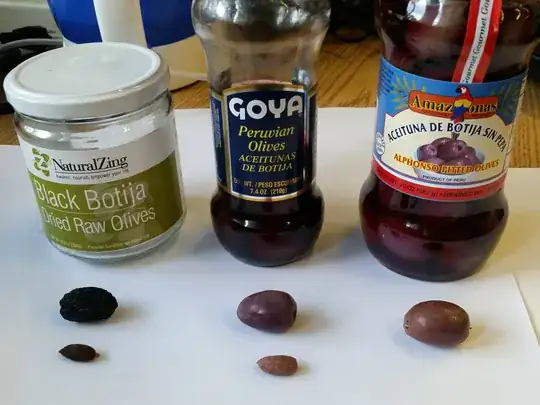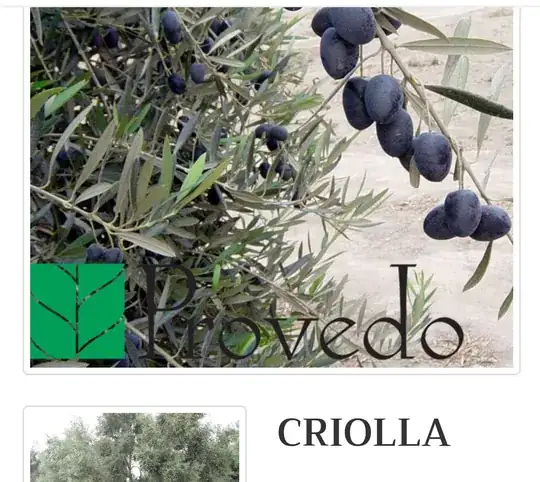For several years I have enjoyed the olives of a type of tree from Peru called a Botija olive tree. The olives are cured only by drying them, which seems to remove almost all the bitterness. They are marketed in small bottles or bags by several companies in the United States such as this one. I enjoy the olives enough that I would eat them every day if I could afford to. I tried drying olives local to Sacramento, California where I live but with inferior results. Although a food dehydrator or oven (as described here or here) effectively removes the bitterness, the bulk, texture and flavor of the Botija are hard to reproduce. I would like to grow one of these trees if I could obtain one. For a year I tried to sprout the pits until I learned that it would take 30 years for a seed-grown tree to bear fruit. So far, efforts to correspond with the farm or its distributor haven't elicited a reply. One article suggests that these olives are also known as "sevillana" olives and are commonly marketed throughout Peru. If this is the same as a Sevillano olive tree then I can buy it. But another article lists Botija and Sevillano as separate varieties. Can anyone help me obtain information that might lead to its capture, such as other names that the Botija olive goes by or where else it is grown? Thanks for your interest and help.
Edit: Another article I found describes the Alfonso olive, which the comment by "refreyre" claims is the same as the Botija olive.
Edit 5/4/18: I found a few brands of Peruvian Botija or Alphonso olives at a local international market.  One jar says "GOYA Peruvian Olives - ACEITUNAS DE BOTIJA" and the other "Amazonas ACEITUNA DE BOTIJA SIN PEPA - ALPHONSO PITTED OLIVES". The two brands of salt-cured olives seem to be the same variety, and the pit looks similar to that of a dried Botija olive. Based on my experience drying other varieties of olive I would have expected the dried olives to be significantly smaller than the brine cured ones, but these don't seem to be.
One jar says "GOYA Peruvian Olives - ACEITUNAS DE BOTIJA" and the other "Amazonas ACEITUNA DE BOTIJA SIN PEPA - ALPHONSO PITTED OLIVES". The two brands of salt-cured olives seem to be the same variety, and the pit looks similar to that of a dried Botija olive. Based on my experience drying other varieties of olive I would have expected the dried olives to be significantly smaller than the brine cured ones, but these don't seem to be.
